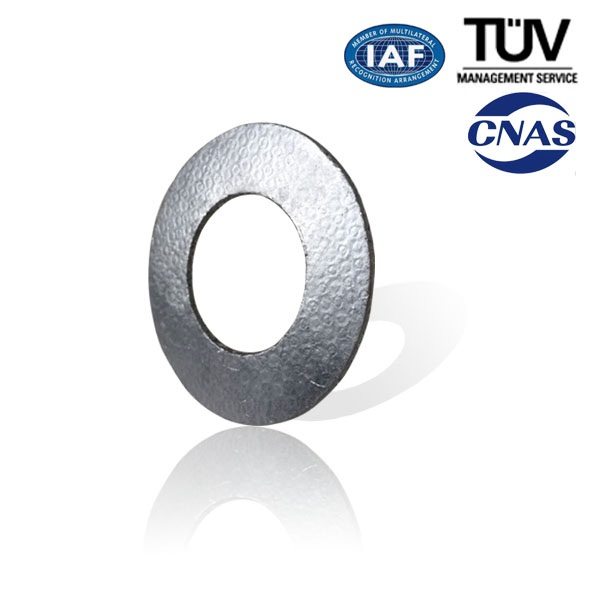High Quality Spiral Wound Gasket-CG Supply to London
High Quality Spiral Wound Gasket-CG Supply to London Detail:
Spiral wound gasket consists of “V-shape”(or”W-shape”)metal tape and nonmetal tape, which are overlapped each other and wound continuously.To fasten the metal tape,both its start point and end point are tack welded.
Feature
Wide Scope of acceptable working conditions. Can be used under high temperature, high pressure and ultra-low temperature or vacuum conditions. Change the combination of the gasket materials is to tackle the chemical corrosion problem of diverse media toward the gasket.
Not very rigid requirements to the surface precision of the flange. May be used to seal flanges with rough surface
Easy installation and handy use.
Excellent Sealability
Products Type
Technical Data Sheet
|
Product&Type |
Size(mm) |
Temperature(℃) |
Pressure(Mpa) |
|
Spiral Wound Gasket filled with Graphite
|
φ16~φ3200 |
(In Oxidizing Environment )-240~+550℃;(In non-Oxidizing Environment)-240~+870℃ |
(Under hot water, oil etc. )30 Mpa; (Under vapor oil, gases etc.)20 Mpa |
|
Spiral Wound Gasket filled with Asbestos
|
φ16~φ3200 |
-150~+450℃ |
15 |
|
Spiral Wound Gasket filled with Asbestos
|
φ16~φ3200 |
-150~+450℃ |
15 |
|
Spiral Wound Gasket filled with PTFE
|
φ16~φ3200 |
-200~+250℃ |
15 |
Application Area
The Spiral Wound Gaskets are mainly used in valves &pipes, pressure vessel, condenser, heat exchanger flanges in oil, chemical, metallurgy, vessel and mechanical industries.
Product detail pictures:

Related Product Guide:
Comparison of O-Ring Materials
O-Ring Sizes for Industrial Applications
High Quality Spiral Wound Gasket-CG Supply to London, The product will supply to all over the world, such as: , , ,
Dirt is one of bearings worst enemies. Proper bearing prep and lubrication can help reduce downtime and maintenance costs. Learn how to avoid common mistakes and achieve optimal bearing performance.
Follow these five steps to ensure proper bearing lubrication:
1. Secure a clean work area and proper tools
2. Remove the bearing seal
3. Clean bearing with solvent and dry
4. Apply the lubricant – measuring the proper amount and ensuring even distribution
5. Replace the seals and shields
To learn more about high performance PFPE lubricants such as Krytox™ Performance Lubricants, visit:
https://www.chemours.com/Lubricants/en_US/applications/Bearings.html?utm_source=YouTube&utm_medium=youtube_howto_bearings&utm_term=lubes_for_bearings&utm_content=link_from_youtube_howto_bearings&utm_campaign=Krytox_HowTo






